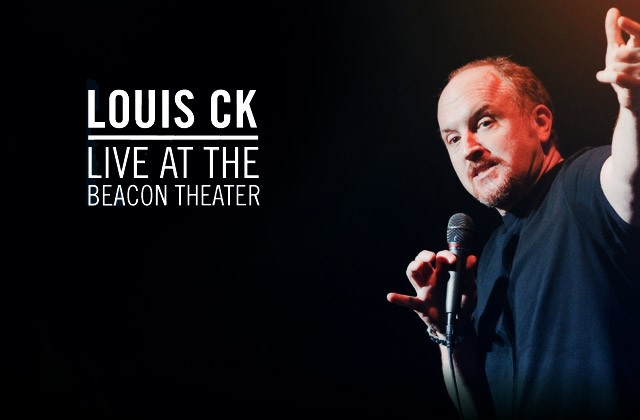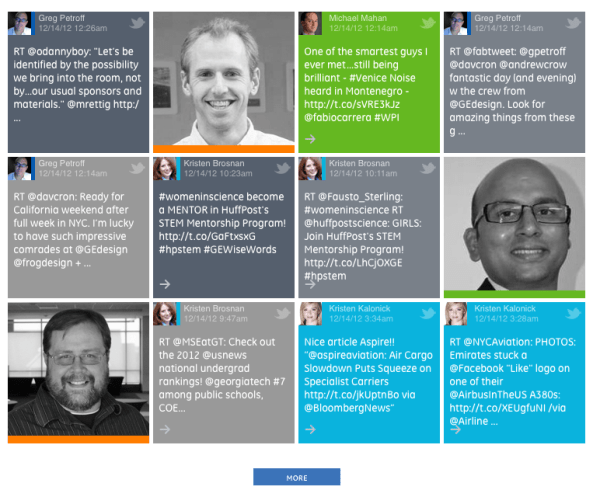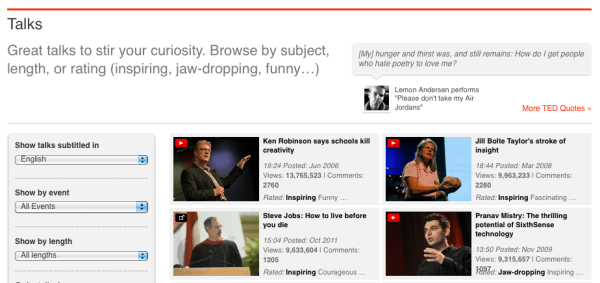Top 5 B2B Marketing Wins of the Year
The end of each year always serves as a time to reflect, and this year, I was pleased to see the growing B2B investment in content marketing and other online pull marketing techniques. It came to mind that there were a fair number of non-traditional case study examples highlighting this push, and that looking to these examples may encourage even more creative B2B planning in 2013.
So, who are these impressive B2B thinkers and what can we learn from them? Well, for that, I’m afraid, you’ll actually have to read my post…
1. Rebellious content creators: Louis C.K. and Amanda Palmer
Changing the platform and dialog
We are all-too familiar with celebrities as brand spokespeople and product endorsers, but 2012 saw the rise of two artists that took on content creation to build their own brand personae. Using valuable content, guerrilla marketing, and personal outreach, comedian Louis C.K. and musician Amanda Palmer became two of the year’s most effective B2B marketers.


Key takeaway: When done right, content marketing can transform any B2B brand.
2. General Electric – “GE Works”
Bringing faces to a brand
GE has long been a leader in outstanding B2B marketing, but in 2012, with the launch of its global marketing initiative “GE Works,” the company honed in on a strategic mission: to showcase not just technology, but the journey, people, and outcome of technology.
Using social media, including early adoption of platforms like Instagram, Pinterest, SocialCam and Viddy, more photo and video content, and strong data visualization pieces, GE was able to communicate its core business without alienating its audience. Its popular “Juice Train” video is a prime example: it follows a train delivering orange juice from Florida to New Jersey in a time-lapsed video, showing the on-board analytics provided by GE technology, and arriving at overarching meaning for the trip.
Did I also mention GE created a holographic game designed around one of its jet engines? Admit it, that’s cool.

But perhaps the most unique initiative this year is the addition of a section on GE’s website dedicated to showcasing the tech team, which features what each member is tweeting in a visually dynamic grid. Clicking on an individual member takes you directly to his or her Twitter feed, encouraging online interaction between consumers and company representatives, and creating stronger brand loyalty.
Key take away: In B2B, focus on connection to your audience rather than your services.
3. TED Talks
Using video to market smart content and grow knowledge
TED Talks, a division of TED, a nonprofit dedicated to “Ideas Worth Spreading,” started as a way to showcase discussions and talks from the popular annual TED Conference. But what started in 2006 as an additional resource has grown into one of the biggest – and most prestigious – online learning resources available. In addition to a devotion to spreading knowledge, TED Talks has hit on one of the most valuable content marketing tools today: video.

Using video as its central platform, TED Talks has accumulated over 1 billion views as of November 2012, with the top video boasting over 13 million views. Instead of relying on old-school marketing techniques only (conferences that have no reach outside of the actual event), TED Talks utilized video marketing to complement the TED mission of spreading ideas; which, in effect, became a rather successful marketing initiative.
The dedication to this initiative was put on display this year, when the organization refused to showcase a talk that was “explicitly bipartisan” that failed to support a fair argument. Instead of feeding into controversy, TED Talks remained committed to using content marketing in line with its mission statement.
Key take away: Find the tactic that works for you and think in terms of mission.
4. Pinterest
Combining human elements with great design

As of September, the site had 56 million users, is valued at $1.5 billion, and had been hailed as any company’s dream new marketing tool. Why so popular? Because the user friendly design, easy sharing capabilities, and concentration on creativity were key in appealing to today’s visual audience. Pair that with easy Facebook and Twitter sharing integration and a layout that allows you to pin, repin, or like from every page, and Pinterest became a social media juggernaut.
What’s more, Pinterest’s growth is based in a decidedly traditional strategy: local meetups. CEO Ben Silbermann held meetups personally to connect with like-minded individuals and get feedback for and support of the site. From there, he launched the “Pin It Forward” campaign – an initiative aimed at promoting the sharing capabilities of the site by encouraging friends to create pinboards in return for more site invites. Connecting users, in place of push marketing, became the definitive growth tactic.
Key takeaway: A beautiful website and word of mouth marketing can work hand-in-hand to create an integrated marketing strategy.
5. Cisco’s Social Media Listening Center for the London 2012 Olympics and Paralympics
Connecting global participants and social media results
For the 2012 Summer Olympics in London, Cisco set up a Social Media Listening Center (with headquarters in London and San Diego) to monitor conversation trends and negative vs positive feedback, and to identify ambush marketing and crisis management that could be dealt with immediately and effectively. Monitored 24/7, the listening center tracked social media conversations in 10 languages and ran “games time operations” to identify the misuse of the Olympics logo by non-sponsors online.

In doing so, Cisco was not only able to serve in its role as the official network infrastructure supporter for the Games, but were able to show concrete social media results in terms of the event itself and of Cisco’s brand awareness before, during, and after. Because of this initiative, Cisco was able to prove social ROI on its sponsorship, and did a comparative analysis of the potential ROI of other Games sponsor.
Cisco and its Olympic marketing programs received 1,701 social mentions in the 10 days leading up to the games, and 2,609 times during the games, with 89% of the mentions during the games being positive.
Key take away: Don’t use social media for promotion, use it for listening.
So there’s my list of 2012 B2B marketing wins. Are there any that I missed? What are yours?
